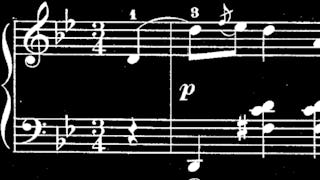Ce cours porte sur le fonctionnement de la musique. Il porte sur la relation entre les détails techniques et esthétiques de la musique, ainsi que sur la manière dont le développement d'un vocabulaire théorique significatif peut vous aider à penser et à parler du style musical. Dans ce cours, vous apprendrez la théorie musicale non pas en étudiant la théorie elle-même, mais en écoutant, en regardant et, bien sûr, en écrivant vos propres exemples musicaux. En écoutant, en voyant et en écrivant vous-même, vous découvrirez des styles classiques, modernes, anciens, pop, jazz et folkloriques. A travers des cours magistraux, des exemples pertinents et de nombreux travaux pratiques, nous examinerons les aspects fondamentaux de la mélodie. Nous passerons au travail à deux voix et au contrepoint, et enfin à trois voix et aux débuts de la fonction harmonique. Il s'agit d'un cours de niveau intermédiaire pour les musiciens et les compositeurs qui ont déjà une certaine compréhension de la théorie musicale grâce à des études antérieures. Si vous êtes un musicien ou un compositeur désireux d'approfondir sa connaissance de la théorie musicale pour la composition, l'interprétation ou l'improvisation, vous êtes au bon endroit. Si vous êtes un amateur de musique ou si vous jouez d'un instrument de musique et que vous souhaitez approfondir votre connaissance de la théorie, de l'esthétique et de l'histoire de la musique, vous êtes également au bon endroit !


Approche de la théorie musicale : Formes mélodiques et harmonie simple

Instructeur : Marc Lowenstein
57 822 déjà inscrits
Inclus avec
(168 avis)
Expérience recommandée
Ce que vous apprendrez
Analyser la relation entre les détails techniques et l'esthétique de la musique.
Découvrez comment la culture, la psychologie, la physique, le contexte formel et le sens du jeu façonnent le langage musical.
Découvrez comment la théorie de la musique peut être utile pour apprécier la musique, communiquer son amour pour elle et la jouer.
Faire preuve de confiance dans le type d'auto-analyse musicale qui peut vous aider à développer vos propres idées musicales.
Compétences que vous acquerrez
- Catégorie : Musique
- Catégorie : Histoire de la musique
- Catégorie : Théorie de la musique
- Catégorie : Musique classique
- Catégorie : Musique du monde
- Catégorie : Performance musicale
- Catégorie : Composition musicale
- Catégorie : Musique instrumentale
Détails à connaître

Ajouter à votre profil LinkedIn
Découvrez comment les employés des entreprises prestigieuses maîtrisent des compétences recherchées

Il y a 5 modules dans ce cours
Ce module d'introduction vous permet de savoir en quoi consiste le cours. Entrez !
Inclus
1 vidéo9 lectures
Dans ce module, nous chercherons à développer un vocabulaire utile pour décrire les aspects techniques de l'expression musicale. Pour ce faire, nous commencerons tout de suite par examiner de près de la musique réelle. Tout d'abord, nous étudierons le chant grégorien (qui peut être d'une beauté saisissante). Ensuite, nous utiliserons un jazz classique lent pour enrichir notre vocabulaire de manière réfléchie.
Inclus
16 vidéos11 lectures4 devoirs3 évaluations par les pairs1 sujet de discussion
Dans ce module, toujours consacré aux lignes mélodiques simples, nous commencerons à aller plus loin en décrivant quelques descriptions techniques utiles des différences entre différents styles musicaux simples et compliqués.
Inclus
17 vidéos8 lectures3 devoirs6 évaluations par les pairs
Nous allons maintenant commencer à décrire différentes façons d'envisager le jeu simultané des hauteurs. En examinant soigneusement nos termes, nous écouterons un large éventail de styles avant de nous concentrer sur les règles de base de la pratique courante.
Inclus
17 vidéos4 lectures3 devoirs3 évaluations par les pairs1 sujet de discussion
En commençant par un examen plus approfondi des cadences, nous trouverons des façons de décrire les accords et la fonction harmonique qui nous aideront à parler et à penser à différents styles de musique. Enfin, nous verrons comment notre nouveau vocabulaire peut nous aider à décrire la fonction et l'esthétique de morceaux de musique de plus en plus complets.
Inclus
18 vidéos3 lectures2 devoirs2 évaluations par les pairs
Instructeur

Offert par
En savoir plus sur Musique et art

Michigan State University
 Statut : Essai gratuit
Statut : Essai gratuitBerklee
 Statut : Essai gratuit
Statut : Essai gratuit Statut : Prévisualisation
Statut : PrévisualisationThe University of Edinburgh
Pour quelles raisons les étudiants sur Coursera nous choisissent-ils pour leur carrière ?




Avis des étudiants
168 avis
- 5 stars
80,95 %
- 4 stars
11,90 %
- 3 stars
2,97 %
- 2 stars
0,59 %
- 1 star
3,57 %
Affichage de 3 sur 168
Révisé le 24 juin 2021
I appreciate the ability to take this course on line. It was difficult but rewarding..
Révisé le 7 févr. 2024
Very well paced, very searching questions and assignments but achievable within the course objectives. I learned a lot thank you !
Révisé le 14 oct. 2023
I gained a lot of knowledge on musical terms in the course. However, it was challenging yet rewarding. Suitable for those with little experience and maybe basic music theory knowledge.

Ouvrez de nouvelles portes avec Coursera Plus
Accès illimité à 10,000+ cours de niveau international, projets pratiques et programmes de certification prêts à l'emploi - tous inclus dans votre abonnement.
Faites progresser votre carrière avec un diplôme en ligne
Obtenez un diplôme auprès d’universités de renommée mondiale - 100 % en ligne
Rejoignez plus de 3 400 entreprises mondiales qui ont choisi Coursera pour les affaires
Améliorez les compétences de vos employés pour exceller dans l’économie numérique
Foire Aux Questions
Pour accéder aux supports de cours, aux devoirs et pour obtenir un certificat, vous devez acheter l'expérience de certificat lorsque vous vous inscrivez à un cours. Vous pouvez essayer un essai gratuit ou demander une aide financière. Le cours peut proposer l'option "Cours complet, pas de certificat". Cette option vous permet de consulter tous les supports de cours, de soumettre les évaluations requises et d'obtenir une note finale. Cela signifie également que vous ne pourrez pas acheter un certificat d'expérience.
Lorsque vous achetez un certificat, vous avez accès à tous les supports de cours, y compris les devoirs notés. Une fois le cours terminé, votre certificat électronique sera ajouté à votre page de réalisations - à partir de là, vous pouvez imprimer votre certificat ou l'ajouter à votre profil LinkedIn.
Oui, pour certains programmes de formation, vous pouvez demander une aide financière ou une bourse si vous n'avez pas les moyens de payer les frais d'inscription. Si une aide financière ou une bourse est disponible pour votre programme de formation, vous trouverez un lien de demande sur la page de description.
Plus de questions
Aide financière disponible,
¹ Certains travaux de ce cours sont notés par l'IA. Pour ces travaux, vos Données internes seront utilisées conformément à Notification de confidentialité de Coursera.

